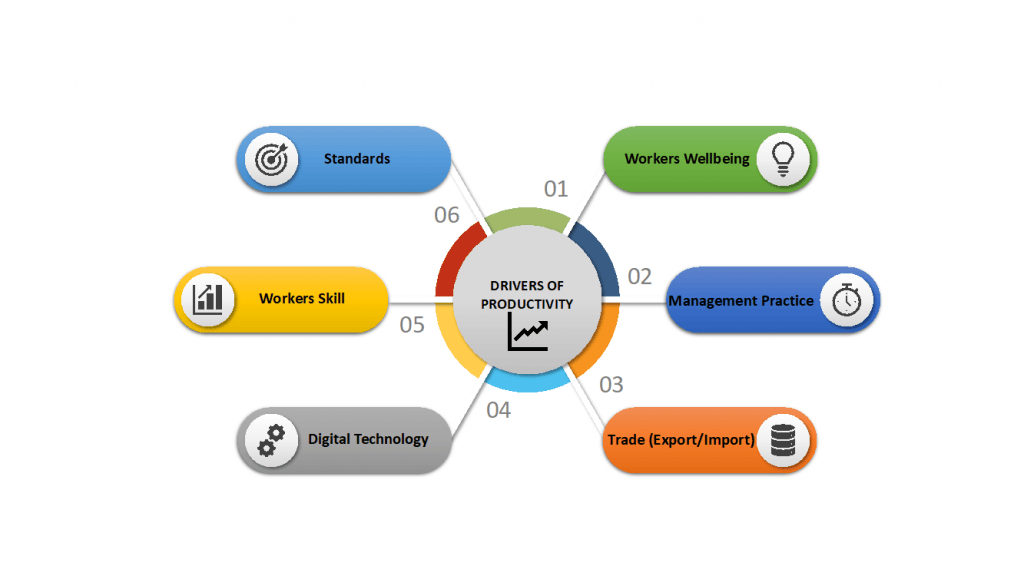In the second part of our series exploring productivity and its drivers, Dr Anwar Adem looks at the important role of management practice in boosting an organisation’s performance and how this can be measured.
For decades, researchers and policymakers have been puzzled as to why organisations making similar investments in their labour and capital, achieve varying levels of firm performance (productivity). In searching for answers, many different drivers of productivity have been explored – technology adoption, employee engagement and well-being and international trade and businesses standards.

Although these factors continue to remain relevant, there is a growing consensus on the importance of management practice in explaining productivity differences across businesses at a national and international level.
Management Practice as a Driver of Productivity
Historically management practice has been given less emphasis as a driver of productivity in economic research due to difficulty in measuring its impact and due to the unreliable nature of self-reported management practices.
However, recently this has changed thanks to innovative research designs, such as the work of John Van Reenen at the London School of Economics and colleagues , which allow us to measure management practice more accurately.
In a recent keynote at the ESCoE Conference on Economic Measurement, Van Reenen discusses the importance of management practice on organisation performance and shares insights from more than 16 years of UK-wide research. This blog summaries key takeaways from this.
The full video can be accessed at:
Measuring Management Practice
So how can we measure management practice?
There are 3 key aspects of management practice which can be measured:
1. Levels of Monitoring. What data does an organisation collect and how is it used to inform decision making and business processes within an organisation?
2. Target Setting. Are employees given clear goals?
3. Levels of Interaction with People. This includes promotions, communications and compensation amongst other things.
An organisation’s level of management practice can be determined based on the aggregate performance score across the above 3 dimensions.
The benefits associated with management practice
Research shows that good management practice is positively correlated with productivity. For example, a recent study by Bloom and co-authors from the US found that organisations scoring within the 90th percentile for positive management practices were twice more productive than those in the 10th percentile. Providing management training has also been found to improve an organisation’s productivity in the long-term. Good management practice is also positively linked to a range of other performance indicators including an organisation’s profitability, output growth, innovation, patenting and exporting.
The barriers to adopting better management practice
Given the benefits, it may seem puzzling that more organisations do not adopt better management practices to boost their productivity. Evidence points to 4 key barriers preventing this.
1. Lack of Information. Organisations may not have information about best management practices or insight into how their practices compare against competitors. Missing information is also a barrier to productivity and profitability.
2. Lack of Human Capital. Organisations may not have sufficient employee resource or skills to implement advanced management practices.
3. Lack of Competition and Bad Governance. Studies show organisations in more competitive industries tend to be better managed. Without competition, there may be little incentive for firms to adopt better management practice. This is also true for family managed firms which were found by one study to be 25 per cent less productive than competitors.
4. Operating Environment. An organisation’s operating environment can limit its ability to make change, e.g. where there are internal politics or structural rigidity.
Enablers of Better Management Practice
According to Bloom and co-authors, evidence suggests that education, product market competition, business environments such as right-to-work laws and learning spillovers can encourage improvements in management practice.
Moreover, the complementarity between management practice and other drivers of productivity such as technological adoption is encouraging news for businesses striving to improve their productivity.